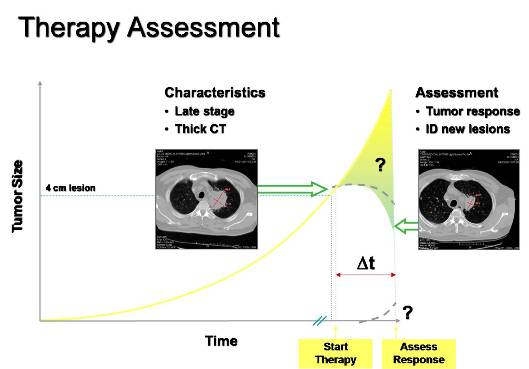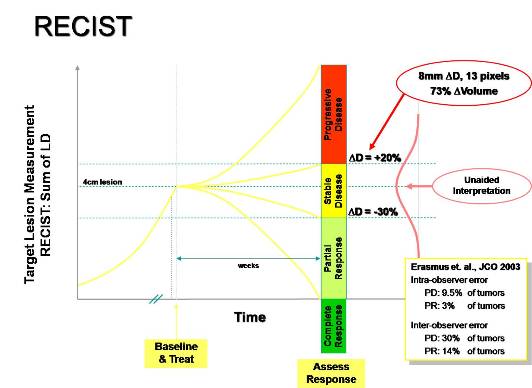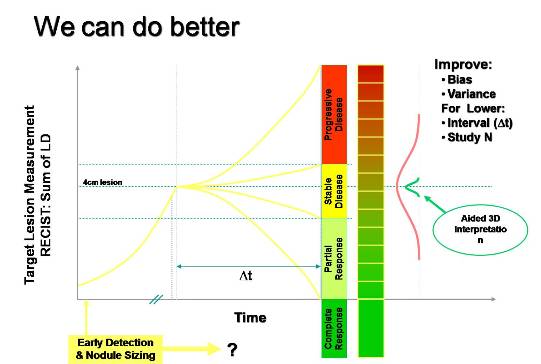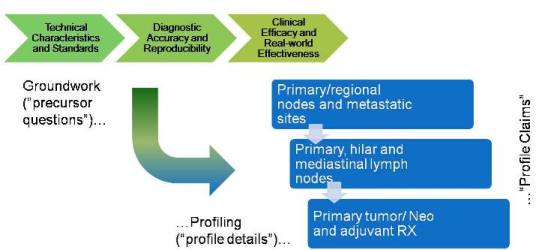Difference between revisions of "CT Volumetry Biomarker Ctte"
| Line 77: | Line 77: | ||
*From the above NBIA link, it is possible to log-in or register as a NBIA user | *From the above NBIA link, it is possible to log-in or register as a NBIA user | ||
| − | *Once logged in, click on ''' | + | *Once logged in, click on '''Search Images''' |
*Filter as follows: | *Filter as follows: | ||
**Collection(s):'''RIDER''' | **Collection(s):'''RIDER''' | ||
| Line 84: | Line 84: | ||
**Submit | **Submit | ||
**Follow prompts to 32 MSK Coffee Break CT Image Sets | **Follow prompts to 32 MSK Coffee Break CT Image Sets | ||
| − | |||
==Meetings / Call Summaries== | ==Meetings / Call Summaries== | ||
*[[Call Summaries]] | *[[Call Summaries]] | ||
Revision as of 22:30, 29 July 2009
This Wiki is for collaborative creation of QIBA's Volumetric CT Technical Committee materials and ongoing activities.
Mission: Investigate the technical feasibility and medical value of quantifying longitudinal changes in volume with CT.
Initial Objectives:
- Characterize the precision and accuracy of volumetric tumor measurements.
- This will be an essential prelude for understanding the threshold that will be needed to classify longitudinal changes in tumor volume as medically meaningful surrogates for changes in health status.
- Compare the sensitivity of volumetric measurements to RECIST/ World Health Organization (WHO) (conventional & modified) outcome measures.
- This will be necessary in order to determine if Progressive Disease can be detected significantly sooner with volumetric techniques than with uni- or bi-dimensional line-lengths placed on a single slice.
In a graphic, therapy assessment looks like this (this slide and the two following courtesy R. Avila):
The present defacto standard applies the following methodolgy:
Our goals are to address bias and variance, which in turn outght to allow shorter trials and/or lower enrollments:
To accomplish this, we adopt the following flow which represents the structure of our effort as well as the resulting output we achieve:
Project Snapshot
Quantitative Response Metrics for Lung Cancer was selected as a useful concrete focus to get started.
Profiling Activities
Write Profile documents to which equipment and sites can conform to accomplish Quantification goals.
- Profile Template - still evolving
- Radiology 2007 - Coronary Calcium Scoring - This paper by Dr. McCollough et al is very analagous to our profiling work and addresses many similar issues (e.g. achieving "standard" noise levels). It could be thought of as an early draft of a Calcium Scoring profile, including both groundwork and equipment specifications.
Groundwork Activities
Validate key concepts and answer key questions needed to write the Profiles and demonstrate their effectiveness.
- VolCT - Group 1A - Analyze Bias/Variance where Ground Truth is Known Deterministically
- VolCT - Group 1B - Focus on Volume Change Analysis of Pulmonary Nodules in Diagnostic Settings
- VolCT - Group 1C - Model Sources of Variability from a Systems Engineering Analysis
- VolCT - Group 2 - Set Standards for using Volumetric Imaging in Clinical Trials
- COPD - Group
Working Documents
- Initial Target Selection - describing the early prioritization discussions and settling on Lung Tumor Volumes
- Sources of Variability - Andrew Buckler
- Validation Roadmap - P. David Mozley, MD
- Process Groundwork & Profiling - Kevin O'Donnell - See also the Wiki Version
Slide Presentations
National Biomedical Imaging Archive Databases
- From the above NBIA link, it is possible to log-in or register as a NBIA user
- Once logged in, click on Search Images
- Filter as follows:
- Collection(s):RIDER
- Available on NBIA
- From (mm/dd/yyyy): 07/17/2009 to 07/17/2009
- Submit
- Follow prompts to 32 MSK Coffee Break CT Image Sets



